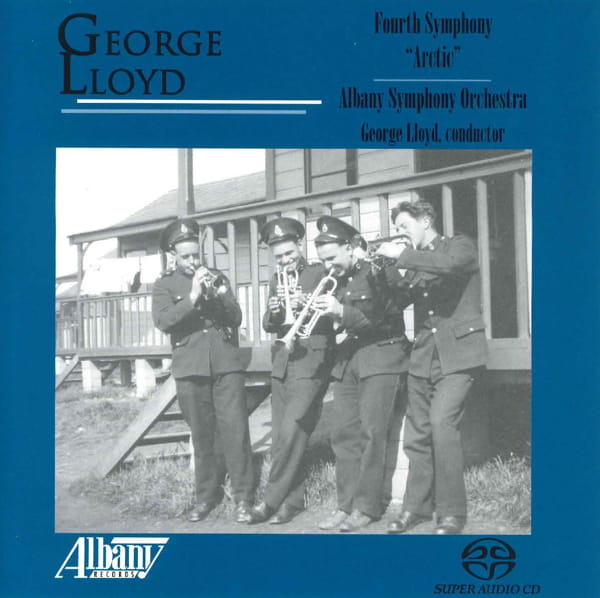Symphony No.4

Those of us who heard the first performance of the Fourth in 1981 will never forget it. Massive in scale (it lasts over an hour), it draws on every conceivable emotion - fear, anger, grief, serenity, love - before a finale of the ecstatic reaffirmation of the triumph of life over death. It shows all Lloyd's talents at their best: his gift for orchestration not least, but also his apparently bottomless well of inventiveness. Simon Heffer. The Spectator.
I was hardly prepared for the imaginative power, fibre and muscle and sheer instrumental brilliance of the writing …a work of haunting tranquillity.. could almost be a long lost ballet by Tchaikovsky. Daily Telegraph
It is difficult to see this as other than a major achievement among our own century’s symphonists. He is a master orchestrator. This is a marvellous symphony of great and permanent value. Gramophone
Video Review in the Ultimate Classical Music Guide
George Lloyd writes: On the title page of my Fourth Symphony I wrote "... a world of darkness, storms, strange colours and a far-away peacefulness.” That for me was the Arctic; during the winter of 1941 - 42 I had seen some of its terrifying aspects, its violence and immensity so overwhelming that even men's barbarity to each other seemed to become less horrifying than it was. In 1945 I started to try to compose again; my impressions and experiences in the Arctic had become something of an obsession and they gradually formulated themselves into a symphony . . . where the music, the sea, an orchestra, my own anguish, all became mixed up together.
The work has four movements. The first concerns itself with the storms and the darkness, with only an occasional glimpse of light. But not everything inside the Arctic Circle is black thunder and roaring seas; the second movement is peaceful and while writing it I was as if living nine years earlier when I had travelled up the Norwegian coast as far as the North Cape; then I saw only the gorgeous colours of the midnight sun. the magnificent snow-capped mountains coming down to the sea and I felt what then seemed like a remote world far from all our troubles.
The third movement is a scherzo and trio. Here I was trying for the first time to produce an effect of brilliance without using any brass instruments. The Finale starts with a slow introduction leading to the main part, which is mostly nothing but a series of quick march-like tunes; I don't think they ever had much to do with life in the Arctic - perhaps I was trying to end the symphony by re-affirming the old convention that when the funeral was over, the band plays quick cheerful tunes to go home.
First public performance at Cheltenham Festival, 13 July 1981

